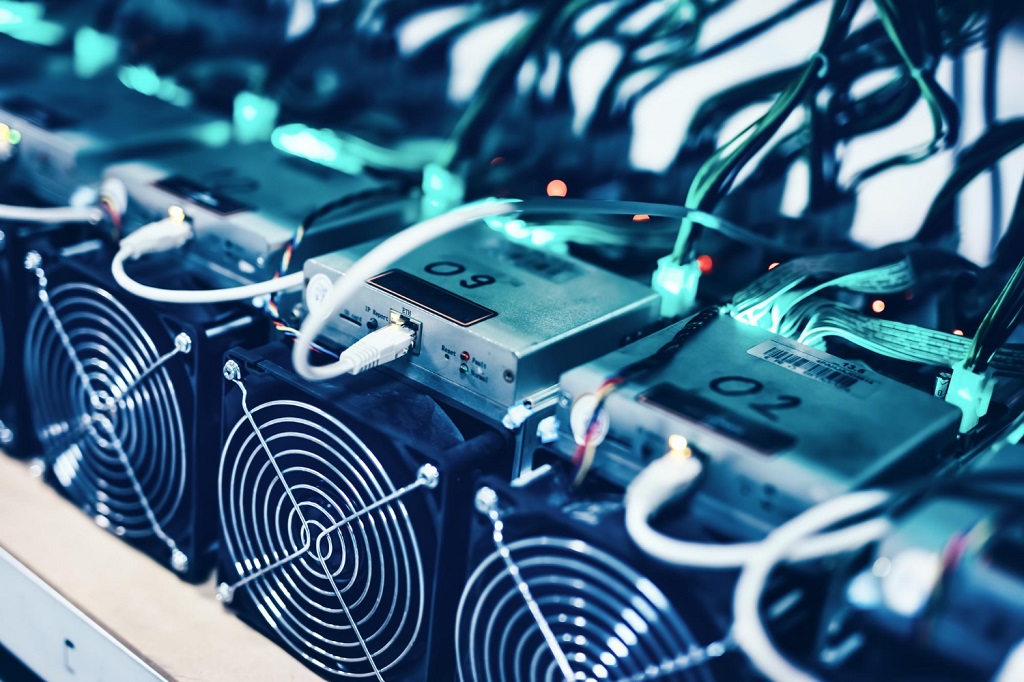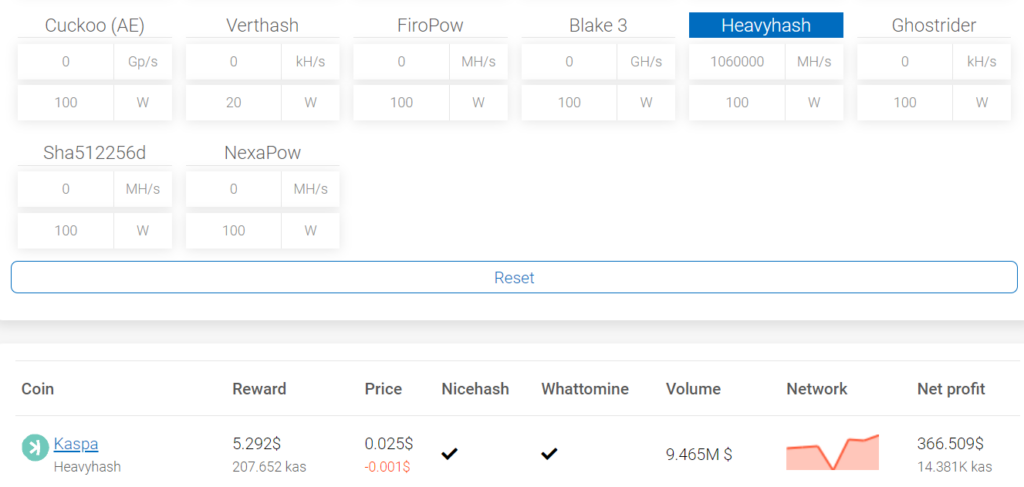In the vast universe of cryptocurrencies, a new star has emerged: Kaspa Coin. This innovative digital currency is pushing the boundaries of what’s possible in the crypto world, offering a unique blend of speed, scalability, and security. But what exactly is Kaspa, and why should you pay attention to it? Let’s delve into the details.
Table of Contents
What is Kaspa Coin?
Understanding Kaspa Crypto
Kaspa Coin (KAS) is not just another cryptocurrency; it’s a technological marvel that implements the PHANTOM GHOSTDAG protocol. Unlike traditional blockchains that operate in a linear fashion, Kaspa allows blocks to be created in parallel, leading to a structure known as a blockDAG. This unique approach enables Kaspa to maintain high block rates and minimal confirmation times, making it one of the fastest cryptocurrencies on the market.

The Technology Behind Kaspa Coin
At the heart of Kaspa is the GHOSTDAG protocol. This innovative technology allows for the creation of multiple blocks in parallel, leading to a significant increase in speed and scalability. Currently, Kaspa is capable of producing one block per second, with ambitions to reach 10 blocks per second and dreams of hitting 100.
The Community-Driven Nature of Kaspa
Kaspa is a community project at its core. It’s completely open-source, with no central governance, embodying the true spirit of decentralization. This approach ensures that Kaspa remains transparent, trustworthy, and in the hands of the people who use it.
Key Features of Kaspa

Kaspa’s unique features set it apart in the crowded cryptocurrency market. Here’s a detailed look at each of these key features:
Fast Transactions
Kaspa’s blockDAG network is designed to generate multiple blocks every second. This high-speed operation allows for rapid posting of transactions to the ledger, making Kaspa Coin ideal for real-time transactions. This feature is a significant advantage over traditional blockchains, which can often struggle with slow transaction speeds.
Kaspa TPS (Transaction Processing Speed)
And the proof is in the numbers. On the mainnet, Kaspa has already achieved a stunning 300 transactions per second. But hold on, because when it comes to pushing limits, Kaspa doesn’t stop there. On the testnet, it has shattered expectations, reaching an astounding 3000 transactions per second.
Low Transaction Fees
A standout feature of Kaspa Crypto Coin is its remarkably low transaction fees, a direct benefit of its high TPS. The cost of transactions plays a pivotal role in user experience and adoption. For everyday users, lower fees mean more economical and accessible use of cryptocurrency for a variety of transactions, ranging from small daily purchases to large asset transfers. This affordability is especially crucial in fostering widespread adoption, as it makes Kaspa an attractive option not only for large-scale investors but also for individuals who use digital currency for routine transactions. The underlying principle is straightforward yet powerful: the higher the TPS, the lower the transaction fees.
Instant Confirmation
Kaspa has been designed to be significantly faster than Bitcoin and many other cryptocurrencies. Each Kaspa transaction is visible to the network in just one second, and each transaction is fully confirmed in an average of 10 seconds. This speed of confirmation is a game-changer in the crypto world, where slow confirmation times can often be a significant drawback.
Scalability
Scalability is a critical issue in the world of cryptocurrencies. As the number of transactions increases, many cryptocurrencies struggle to keep up. However, Kaspa Crypto addresses this issue head-on with its ability to generate and confirm multiple blocks per second. This feature ensures that Kaspa can handle a high volume of transactions without compromising on security or decentralization.
Efficient Proof-of-Work
Kaspa uses the kHeavyHash algorithm for consensus and network security. This efficient proof-of-work algorithm, combined with the high-throughput DAG and no-wasted-blocks approach, makes Kaspa Coin less energy-intensive than other PoW networks. This efficiency is a significant advantage in a world increasingly concerned about the environmental impact of cryptocurrencies.
Security
Security is a top priority for any cryptocurrency, and Kaspa Coin is no exception. Kaspa offers robust security features, including a revolutionary GhostDAG Consensus mechanism. This mechanism ensures that the network remains secure without compromising on decentralization, providing users with peace of mind.
Here’s a detailed chart summarizing the key features of Kaspa:
| Feature | Description |
|---|---|
| Fast Transactions | Kaspa’s blockDAG network generates multiple blocks every second, allowing for rapid posting of transactions to the ledger. |
| Low Transaction Fees | Kaspa Coin’s exceptionally low transaction fees make it an accessible and cost-effective choice for everyday users, promoting wider adoption by enabling economical transactions across a broad spectrum of uses. |
| Instant Confirmation | Each Kaspa transaction is visible to the network in one second, and fully confirmed in an average of 10 seconds. |
| Scalability | Kaspa can generate and confirm multiple blocks per second, allowing it to handle a high volume of transactions without compromising on security or decentralization. |
| Efficient Proof-of-Work | Kaspa uses the kHeavyHash algorithm for consensus and network security, making it less energy-intensive than other PoW networks. |
| Security | Kaspa offers robust security features, including a revolutionary GhostDAG Consensus mechanism, ensuring the network remains secure without compromising on decentralization. |
Kaspa Wallets

Kaspa provides a variety of wallet options to cater to the diverse needs of its users. Each wallet is designed with a focus on user-friendliness, security, and functionality. Here’s a closer look at the different Kaspa wallets:
1. Kaspa Web/Mobile Wallet
The Kaspa Coin Web Wallet is designed to be the most user-friendly and secure wallet available on the market today. Its simple and easy-to-use interface makes it easy for users to send and receive payments. The wallet can be accessed from any web browser, making it highly accessible and convenient for users.
2. Desktop Wallet – KDX
The KDX Desktop Wallet is a robust solution for users who prefer to manage their Kaspa coins on a desktop environment. The KDX process manager provides zero-effort installation and configuration of the Kaspa full-node software and the Kaspa Wallet, making it a popular choice among users.
3. Kaspa Command Line Wallet
For advanced users, the Kaspa Crypto Command Line Wallet offers a high level of control and flexibility. This wallet is part of the core Kaspa Coin node software bundle and is maintained by the core team. It’s an excellent choice for users who are comfortable with command-line interfaces and want to leverage the full power of the Kaspa network.
For a more detailed Kaspa wallets guide and how to use them, you can visit this link. This comprehensive guide provides step-by-step instructions on how to set up and use the Kaspa wallets, making it a valuable resource for both new and experienced users.
Kaspa Coin Mining

Kaspa mining is a process that involves the use of computational power to validate transactions and add new blocks to the Kaspa network. This process is crucial for maintaining the security and integrity of the Kaspa network. Here’s a closer look at Kaspa mining:
1. ASIC Mining
ASIC, which stands for Application-Specific Integrated Circuit, is a type of hardware component designed to perform a specific task. In the context of cryptocurrencies, ASICs are custom-built to execute the hashing algorithms used in the mining process. The introduction of ASICs specifically designed for Kaspa mining has already had a noticeable impact, with a significant increase in the network’s hashrate. This trend is likely to continue as more ASIC models become available and more miners start using them.
2. Mining Pools
Mining pools are groups of miners who combine their computational resources to increase their chances of mining new blocks. For Kaspa, you can join the WoolyPooly mining pool by setting your ASIC device to connect to pool.woolypooly.com:3112 (autogeo, SSL connection supported).
3. Kaspa Mining Calculator

The profitability of Kaspa mining is determined by several factors, including the cost of the ASIC device, the cost of electricity, the device’s mining efficiency, and the current price of Kaspa. Use these calcs to check the current rates:
4. Transition from GPU to ASIC
Kaspa is currently transitioning from GPU to ASIC mining. This transition is expected to have a significant impact on the Kaspa network. As more Kaspa Asic miners start using it, the network’s hashrate is likely to increase dramatically, potentially by 10x or even 100x. This increase in hashrate will make the network more secure but could also make it more difficult for individual miners to earn rewards, as they’ll be competing with more powerful ASIC miners.
Kaspa in the Market
Kaspa Crypto Comparison
Kaspa Coin has been compared with various other cryptocurrencies to highlight its unique features and advantages. Here are some detailed comparisons of Kaspa with other prominent cryptocurrencies:
These comparisons provide insights into how Kaspa stands out in the crowded cryptocurrency market and its potential to revolutionize the crypto space.
Kaspa Community

The Kaspa community is a vibrant and growing group of individuals who share a common interest in the Kaspa cryptocurrency. This community is the backbone of Kaspa, contributing to its development, promotion, and overall success. Here’s a closer look at the Kaspa community:
1. Open to All
The Kaspa community is open to everyone, regardless of their skills or experience. Whether you’re a coder, marketer, vlogger, community manager, enthusiast, or just someone curious about Kaspa Coin, you’re welcome to join the community. The community values diversity and believes that everyone has something unique to contribute.
2. Community Contributions
Members of the Kaspa community actively contribute to the project in various ways. Some members contribute by coding and developing new features, while others contribute by promoting Kaspa and educating others about it. The community also organizes various events and activities to engage members and promote Kaspa.
3. Public Donations
The Kaspa community welcomes public donations to support the project’s development. These donations are used to fund various initiatives, such as new feature development, marketing campaigns, and community events.
4. Community Governance
Kaspa is a community-driven project with no central governance. This means that the community plays a crucial role in making decisions about the project’s direction. Community members can participate in decision-making processes, contributing their ideas and opinions.
Here are some links where you can join and follow the Kaspa community:
By joining the Kaspa community, you can stay updated on the latest developments, participate in discussions, and contribute to the project’s success.
Recent News and Developments
Kaspa Coin is constantly evolving, with recent news and developments further enhancing its value proposition. For instance, Kaspa recently achieved an unprecedented 10 Blocks Per Second (BPS) on its testnet, setting a new standard in the world of cryptography. Other significant developments include the integration of Kaspa into CoinPal, a leading cryptocurrency payment service provider, and the launch of a new funding pool to secure a listing for Kaspa on the CeFi platform, Bitpanda.
Future Developments
Kaspa Smart Contracts
Kaspa smart contracts have emerged as a significant topic in the blockchain world. They are not just another addition to the blockchain ecosystem but represent Kaspa’s commitment to excellence, offering features and benefits that stand out in the crypto world.
Layered Solutions: L1 and L2 Explained
Most discussions about Kaspa smart contracts revolve around a solution where all smart contract activities are processed entirely on layer 2 (L2), designed to prevent overloading of layer 1 (L1). L1 serves two primary functions for L2: supplying the “fuel” for L2 in terms of transaction fees and providing the real value amount for L2 validators.
Redefining Virtual Machines for Optimal Performance
While the Ethereum Virtual Machine (EVM) is widely recognized, many in the Kaspa community find it inefficient for handling the daily load of a Kaspa L2 network. Proposals include creating a virtual machine based on high-performance programming languages like RUST or cross-compilation languages like WASM.
The Kaspa Vision: Beyond Traditional Smart Contracts
Kaspa coin envisions a more adaptable environment for decentralized applications (dApps) and blockchain initiatives. Central to this vision is the “Hypergraph,” crafted to support intricate, stateful decentralized applications.
Exploring the Rollups Technology
Kaspa coin is assessing the incorporation of Smart Contracts using the Rollups technology, designed to enhance the speed and efficiency of blockchain transactions. Two potential pathways are being explored: Full Integration with Rollups and a Hybrid Solution.
Real-world Applications of Kaspa Smart Contracts
The Kaspa crypto community is actively discussing the myriad of possibilities that Kaspa smart contracts can offer. Decentralized finance (DeFi) stands out as a prominent application, with Kaspa smart contracts potentially offering enhanced security, scalability, and interoperability.
Implementation Timeline
The exact timeline for Kaspa’s smart contract implementation remains a topic of speculation. The primary focus for the Kaspa team currently is the node rewrite in the Rust programming language. Once this is completed, the development of smart contracts will commence.
Conclusion
Kaspa is more than just a new entrant in the cryptocurrency market. It’s a game-changer that’s pushing the boundaries of speed, scalability, and security in the crypto world. With its innovative technology, robust features, and vibrant community, Kaspa is poised to make a significant impact in the world of digital currencies. So, whether you’re a seasoned investor or a curious onlooker, keep an eye on Kaspa – it’s a star that’s set to shine brightly in the crypto universe.
FAQs
What makes Kaspa different from other cryptocurrencies?
Kaspa stands out for its use of the GHOSTDAG protocol, which allows for the creation of blocks in parallel, leading to a blockDAG structure. This enables high block rates and minimal confirmation times, making Kaspa one of the fastest and most scalable cryptocurrencies on the market.
What is the GHOSTDAG protocol?
The GHOSTDAG protocol is a technology that allows for the creation of blocks in parallel, rather than in a linear fashion like traditional blockchains. This leads to a structure known as a blockDAG, which enables high block rates and minimal confirmation times.
How fast is Kaspa?
Kaspa is capable of producing one block per second, with ambitions to reach 10 blocks per second and dreams of hitting 100. Each Kaspa transaction is visible to the network in one second, and fully confirmed in just 10 seconds on average.
Is Kaspa secure?
Yes, Kaspa offers robust security features, including a revolutionary GhostDAG Consensus mechanism. This ensures that the network remains secure without compromising on decentralization.
Where can I buy Kaspa coins?
How to mine Kaspa?
To mine Kaspa, you need to follow these steps:
Acquire an ASIC device that is capable of mining Kaspa. There are several models available, each with different price points, power consumption levels, and hashrates.
Connect the ASIC device to the internet. This usually involves plugging the device into a power source and connecting it to your router via an Ethernet cable.
Set up the mining pool. After your ASIC device is connected to the internet, you’ll need to set it up to mine Kaspa. This involves making a Kaspa wallet and joining a mining pool, such as the WoolyPooly mining pool.
Start mining. Once your ASIC device is set up and connected to the WoolyPooly mining pool, it can start mining. The device will begin to solve complex mathematical problems, and when it finds a solution, it will submit this solution (or “share”) to the pool.
Earn rewards. As soon as your ASIC device starts submitting shares to the mining pool, you’ll begin to earn rewards. These rewards are paid out in Kaspa coins and are usually proportional to the amount of computational power you contribute to the pool.
Is Kaspa a token?
No, Kaspa is not a token. It is a cryptocurrency with its own native coin (KAS) that operates on its own unique blockDAG network. Unlike tokens, which are built on top of other blockchains (like ERC-20 tokens on Ethereum), Kaspa has its own underlying blockchain technology.


